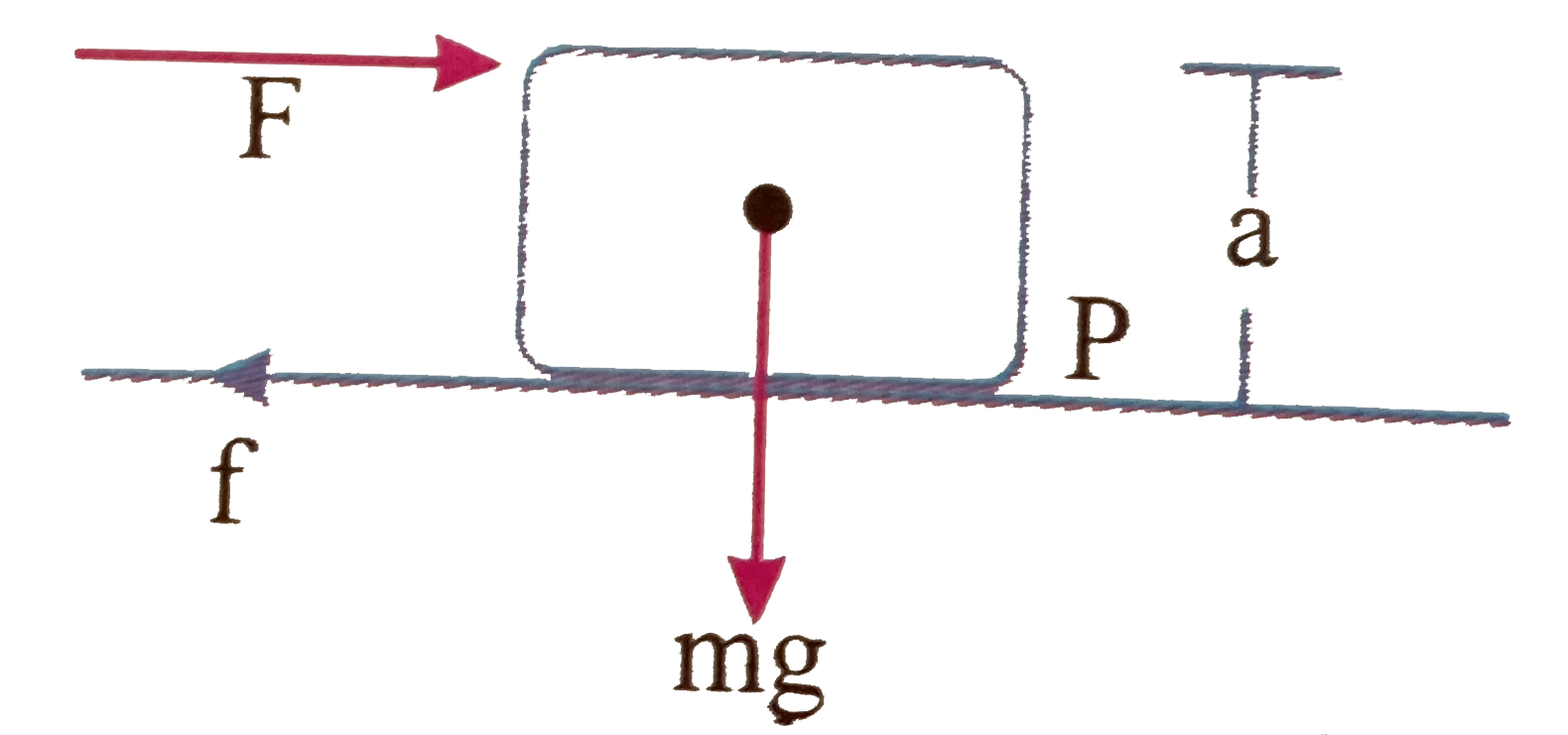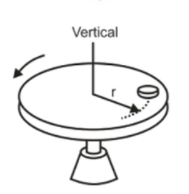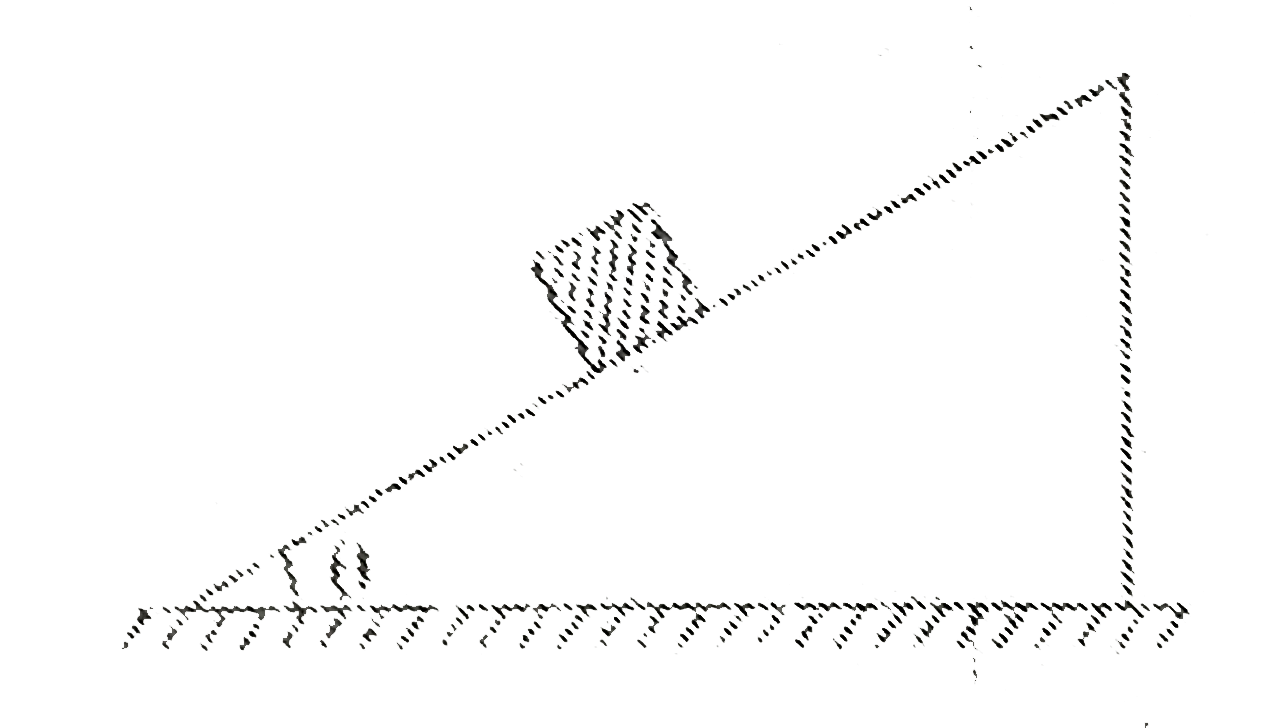A very small cube of mass is placed on the inside of a conial funnelof semivertical angle . The funnel is then set in rotation. If the coefficient of static friction between the cube and the funnel is and the centre of the cube is at a distance from the axis of rotation, what are the largest and smallest angular velocities with which the funnel can be rotated so that the block will not move with respect to the funnel ?
The correct Answer is:
Step by step video, text & image solution for A very small cube of mass m is placed on the inside of a conial funnelof semivertical angle (pi//2-theta). The funnel is then set in rotation. If the coefficient of static friction between the cube and the funnel is mu and the centre of the cube is at a distancer from the axis of rotation, what are the largest and smallest angular velocities with which the funnel can be rotated so that the block will not move with respect to the funnel ? by Physics experts to help you in doubts & scoring excellent marks in Class 11 exams.
Updated on:21/07/2023Topper's Solved these Questions
- CENTRIPITAL AND CENTRIFUGAL FORCESBook:NN GHOSHChapter:CENTRIPITAL AND CENTRIFUGAL FORCESExercise:Exercises (A)
Explore 18 Videos
- CALORIMETRYBook:NN GHOSHChapter:CALORIMETRYExercise:All Questions
Explore 28 Videos
- COMPOSITION AND RESOLUTION OF VELOCITIESBook:NN GHOSHChapter:COMPOSITION AND RESOLUTION OF VELOCITIESExercise:Exercise
Explore 25 Videos
Similar Questions
What is the angular velocity of a particle lying on the axis of rotation ?
View SolutionA force F is applied on the top of a cube as shown in the figure. The coefficient of friction between the cube and the ground is μ. If F is gradually increased, find the value of μ for which the cube will topple before sliding.

View Solution
Knowledge Check
The coefficient of static friction between a small coin and the surface of a turntable is 0.30 . The turntable rotates at 2rads−1. What is maximum distance from the centre of the turntable at which the coin will not slide ?
A7.5 mB1.5 mC0.15 mD0.75 mA cube of mass m is placed on top of a wedge of mass 2m, as shown in figure. There is no friction between the cube and the wedge. The minimum co - efficient of friction between the wedge and the horizontal surface, so that the wedge does not move is
 A0.1B0.2C0.3D1√2
A0.1B0.2C0.3D1√2The coin is notating with a plate without sliding If the coefficient of friction between the coin and plane is μ=0.75 the friction between the coin and plate is

If the plate is rotating along and the coin is gently placed on the rotating plate, the frictional force on the coin isAmgB32mgCmg2D34mg
A small coin of mass 40 g is placed on the horizontal surface of a rotating disc. The disc starts from rest and is given a constant angular acceleration α=2 rad s−2. The coefficient of static friction between the coin and the disc is μs=3/4 and the coefficient of kinetic friction is μk=0.5. The coin is placed at a distance r=1m from the centre of the disc. The magnitude of hte resultant force on the coin exerted by the disc just before it starts slipping on the disc is :

View SolutionA rigid body is rotating with angular velocity 'cd about an axis of rotation. Let 'v' be the linear velocity of particle which is at perpendicular distance 'r' from the axis of rotation. Then the relation v=rω implies that
View SolutionA cube is pplaced on an inclined plane of inclinbation θ as shown in figure. Cofficent of friction br=etween the cube and the plane is μ. As the angle θ is gradually increased, the cube slides before toppling if

View SolutionA solid block of mass 2kg is resting inside a cube shown in figure The cube is moving with a velocity ˆv=5ˆi+2ˆjms−1 If the coefficient of friction between the surface of cube and block is 0.2 then the force of friction between the block and cube is

View SolutionA small coin of mass 80g is placed on the horizontal surface of a rotating disc. The disc starts from rest and is given a constant angular acceleration α=2rad/s2. The coefficient of static friction between the coin and the disc is μs=3/4 and cofficient of kinetic friction is μk=0.5. The coin is placed at a distance r=1m from the centre of the disc. The magnitude of the resultant force on the coin exerted by the disc just before it starts slipping on the disc is

View Solution

